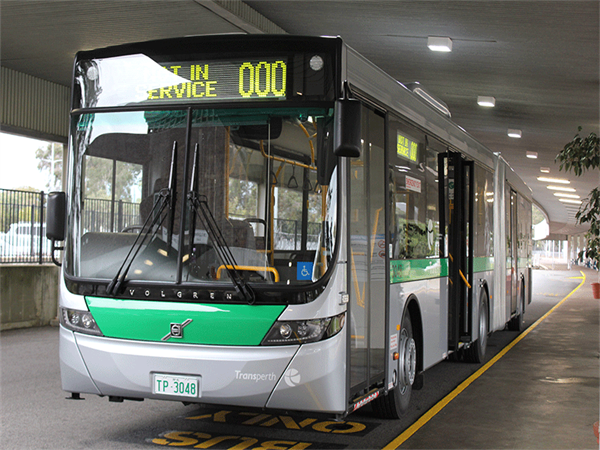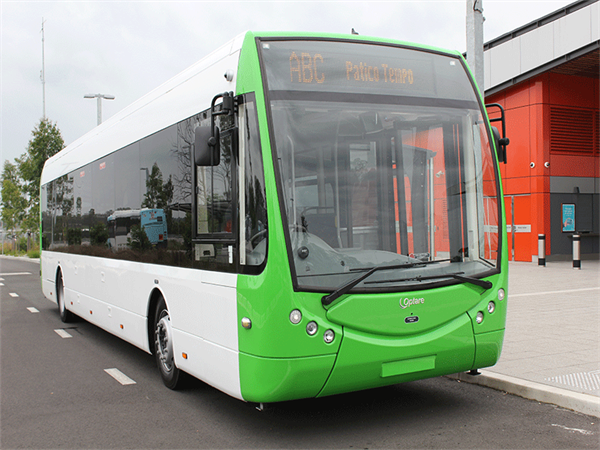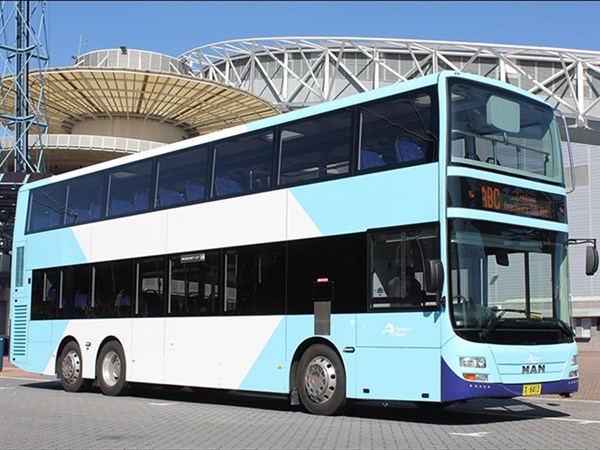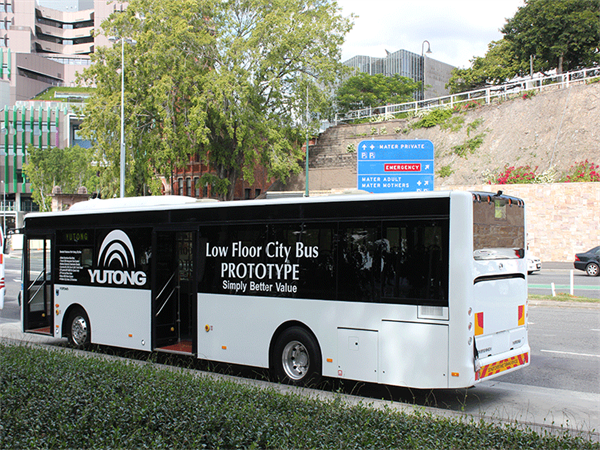What were the best city buses of 2015-2016? Here are five of our favourites
Major route bus operators rely on city buses that are well designed and able to cope with a large number of passengers and those with limited mobility.
Those in the market for a new one need to be sure they can rely on the vehicle, especially if it is used on high-frequency routes.
Volvo B8RLEA
It’s amazing what modern smaller engines can do — take the new 8-litre Volvo bus engine, for example.
This little goer pumps out 350hp (261kW), with 1,400Nm of torque. That’s actually 10hp (5.5kW) more than the phased-out 12-litre engine it replaces in some applications.
That’s why Volvo has put the D8K engine into its new articulated low-floor bus built for the Public Transport Authority (PTA) of Western Australia.
It’s a lot of bus to push around — 18m and 26 tonnes GVM. On the other hand, average speed for Perth buses is only around 25km/h.
Significantly this new engine has something the horizontal 12-litre motor lacked — Euro 6 emissions control.
- More info: Volvo B8RLEA review (and watch the video)
Optare Tempo
This Tempo runs a 6 cylinder, 6.4 litre Euro 5 Mercedes-Benz pushing out 282hp (kW) and 1120Nm of torque.
By the way the tranny has a three-stage retarder working off the foot brake, which manages the all-round discs. Interestingly, there is also something called RELS – reduced engine load at stop – which apparently saves fuel while waiting at lights.
The monocoque integrated chassis-body design along with other features gives this bus a relatively light tare weight of a touch over 10 tonnes with a full tank of fuel.
the vision is excellent, for both driver and passengers. There’s certainly lots of glass.
The front windscreen is very low, and the side window line in the downstairs section of the saloon is also lower than you usually see in buses on the road in Australia.
- More info: Optare Tempo review (and watch the video)
3. Mercedes-Benz Citaro
You may not have heard of it, but the German-built Citaro low floor route bus has taken Europe by storm.
The flagship of the Daimler city bus fleet won European Bus of the Year in 2012, and an amazing 35,000 units have been sold in more than 40 countries in the past decade or so.
But this is the only Citaro on the road in Australia.
That’s because this bus is 2.55 metres wide, which is the norm for heavy vehicles in Europe and the United States. In Australia of course the standard is 2.50 metres.
You can’t pick that 5 centimetre difference with the naked eye, but the implications for the Australian bus body building industry could be huge if the states end up allowing the extra width.
The Citaro, with its dipped steel monocoque integrated chassis and body, is built from the ground up at a huge Mercedes-Benz factory at Mannheim in Germany’s south-west.
- More info: Mercedes-Benz Citaro (and watch the video)
4. MAN A95
Try as we might we couldn’t seem to get MAN’s new A95 double-decker bus to roll even one degree
Let’s get one thing straight from the outset: double-deckers aren’t necessarily prone to rolling over.
We experienced this on our recent drive of the MAN A95 double-decker chassis with Gemilang’s ‘Eco Range’ body.
Try as we might, we couldn’t seem to get the bus to roll even one degree despite some tight cornering at a virtually empty Sydney Olympic Park precinct.
It was a surprising and pretty amazing experience, which MAN puts down to having stabiliser bars on each of the three axles of this 12-metre low floor city bus, combined with its low centre of gravity and light aluminium construction.
Adding reassurance was MAN’s electronic stability program (ESP), which would have instantly and automatically reduced the engine torque or braked targeted wheels if we had got too carried away.
But great roll stability is not the only standout feature of the A95 Eco Range.
The other remarkable thing in our book is the fact that this bus has only one step on the bottom deck, right at the back row of seats.
That’s because it has a portal axle (see photo) which are common in Europe but unusual in Australia so far.
- More info: MAN A95 review (and watch the video)
5. Yutong Low Floor
ABC magazine was indeed pleasantly surprised by how good this Yutong is to drive.
The 9-litre Cummins ISL engine provides plenty of get-up-and-go, at 320hp (235kW) with 1,350Nm of torque.
It’s matched nicely with the six-speed ZF Ecolife transmission to give smooth gear changes.
The steering is excellent; the bus handles well; and it stops quickly thanks to the front and rear discs.
There is Wabco ABS which is mandatory of course, but the Yutong also has EBS (electronic braking system) which includes ESC (electronic stability control).
The ZF transmission retarder activated by the brake pedal assists with the slowing duties.
One of the impressive features was a smooth ride on ECAS air bag suspension over some pretty severe undulations on Ipswich Road.
There’s a comfortable Isri seat; a good driving position; handy storage packet in the driver’s door; and drink bottle holder. (The latter is a simple thing but surprisingly one that can’t be taken for granted in heavy vehicles.)
Inside, the Yutong looks similar to the incumbent low-floor bodies in Australia. There is capacity for 44 seats, 25 standees and two wheelchairs — although there looks to be plenty of room for three.
The engine noise up the back, and even from the outside, is not as loud as I was expecting.
A Thoreb integrated data system, with connected security cameras and telematics capability, comes as standard.
There are two doors but Yutong is also evaluating a single door option.
Automatic fire suppression in the engine bay is reassuring.
A spare windscreen will come with each bus; and standard warranty will be two years bumper to bumper, with extra warranties as an option.






